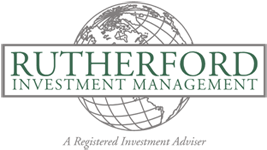Originally published in the Daily Journal of Commerce, Portland OR
Published May 12, 2014

Profit taking, rebalancing and sector rotation made the market lumpy. Companies that fared best in 2013 were sold by portfolio managers, and their prices were therefore affected negatively, even though fundamentals did not change. This does not make them bad companies, and we may yet see growth in those stocks. It remains to be seen whether all this reshuffling is good for portfolios, because now the portfolio managers have to find stocks that will do as well or better than the ones they sold.
According to the government, gross domestic product grew in the first quarter at a very low one-tenth of 1 percent, as a severe winter affected industrial output, exports and retail sales. While we had record snows, rainfall and flooding in parts of the Midwest and East, we had severe drought in parts of the West. This drought portends higher food costs.
Subsequently, JP Morgan and other economic forecasting firms said the GDP was actually in the minus column for the first quarter. Despite the soft conditions, the Federal Reserve stayed to its course of tapering quantitative easing. Interest rates were only marginally affected as investors moved from equities to bonds, because of the outstanding equity returns in 2013 and the flight to safety caused by events in Ukraine.
By the end of April, it became clear that it really was the weather that negatively affected the economy in the first quarter, and not some more ominous cause. Forecasters are now expecting growth for the year in the 3-4 percent range, which means a fast pickup for the balance of the year.
The capital markets have slowly improved with the economy. But uncertainty caused by events in Ukraine and the new Russian foreign policy have dampened markets. Vladimir Putin’s aggressive actions, and his “New Russia” policy creates such uncertainty that the markets do not know what to do about it.
History shows that a weak response to aggressive behavior often leads to more aggressive behavior. At what cost will such behavior be curtailed, and is the West willing to pay it? Obviously Russia and the West are engaged in a high stakes bet, with the outcome in doubt.
So far, Putin is having his way, but history shows that aggressive action almost always ends badly for the aggressor. While ancient aggressors triumphed for long periods of time, more recently these cycles have grown shorter. Hitler came to power in 1933, and was gone by 1945. Imperial Japan attacked the U.S. in 1941, and was defeated by 1945. While a shooting war may evolve in the caucuses, it is worth observing that the cycle of geographically aggressive behavior on a grand scale is becoming shorter.
Despite struggling with these issues of weather-related economic slowdown, wavering Fed policy and Russian military aggression, the markets haltingly and sluggishly reached new all-time record highs. Employment percentage numbers strengthened in part because the labor participation rate declined as workers continue to drop out of the workforce. Housing starts were 635,000 in March versus 619,000 a year ago, and a low of 583,000 a month ago. The housing numbers show the effects of the severe winter. Home ownership reached an all-time low, showing the continued effect of the credit/housing crisis.
Consumer confidence was still weak with April at 82.3 (1985 equals 100), down from 83.9 in March. Since the consumer is 70 percent of our economy, this number has even more significance.
Conversely, the April ISM index, an indicator of industrial output, registered 54.9 percent – an increase of 1.2 percentage points from March’s reading of 53.7 percent, indicating expansion in manufacturing for the 11th consecutive month. The purchaser’s managers’ index was 53.7, up from the prior month and a year ago. Factor in Ukraine, and the economic backdrop is decidedly mixed, so it is a sign of confidence in the U.S. that the markets were able to slouch forward.
We are now beginning the season when the markets usually slow. They tend to be more positive from November to May than from May to November. However the difference is slight – plus 4 percent vs. plus 2 percent – and given the paucity of alternative investments, there is no reason to “sell in May and go away,” as the adage says.
Further, this is a midterm election year, when uncertainty is high. Do not look for much positive in the capital markets until the elections are settled in November, and thereafter we should see improvement. I believe the markets will be up on the year, but of course this is a very long-in-the-tooth market, and exogenous events can intervene. The wild card is Putin.
